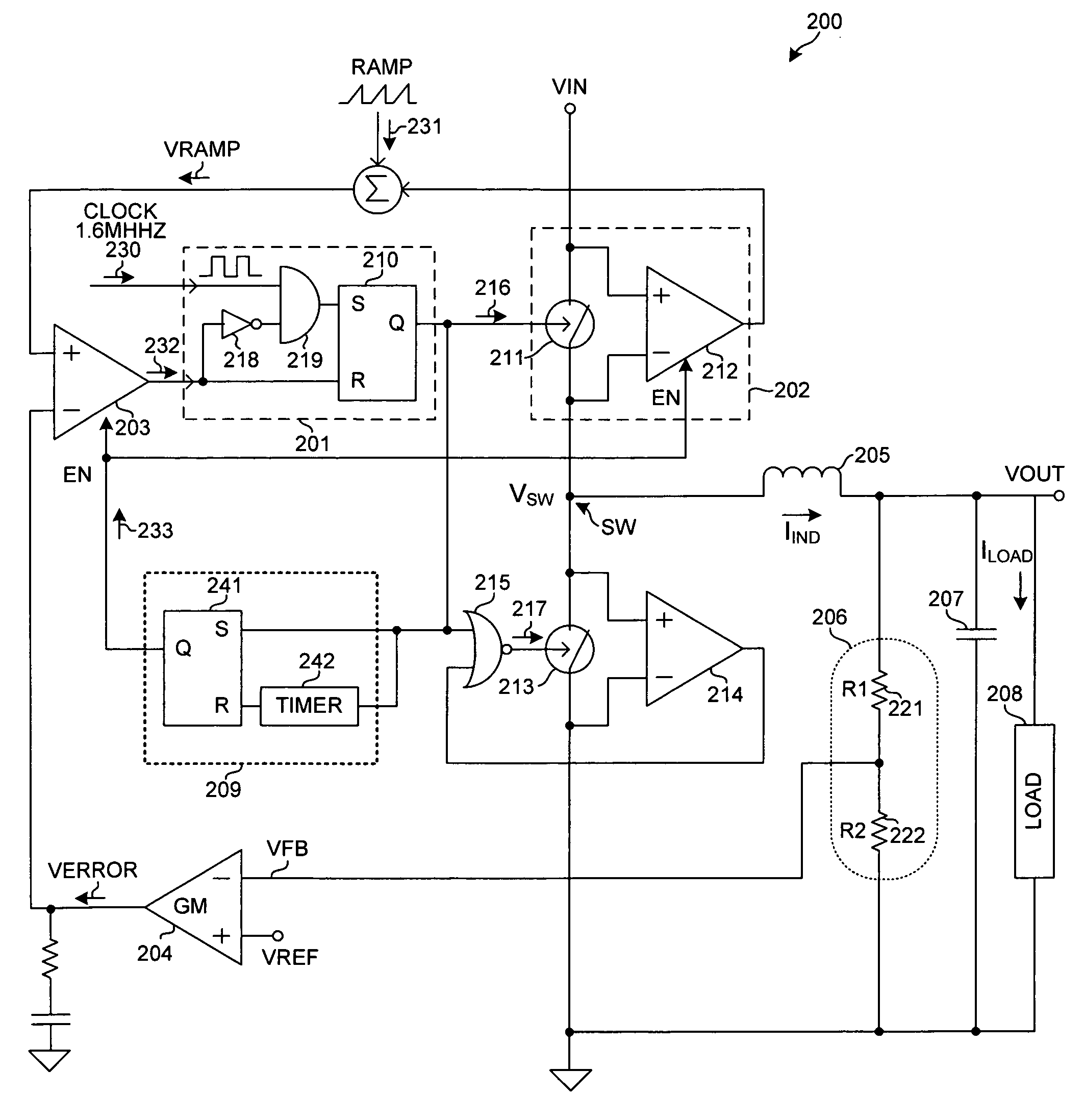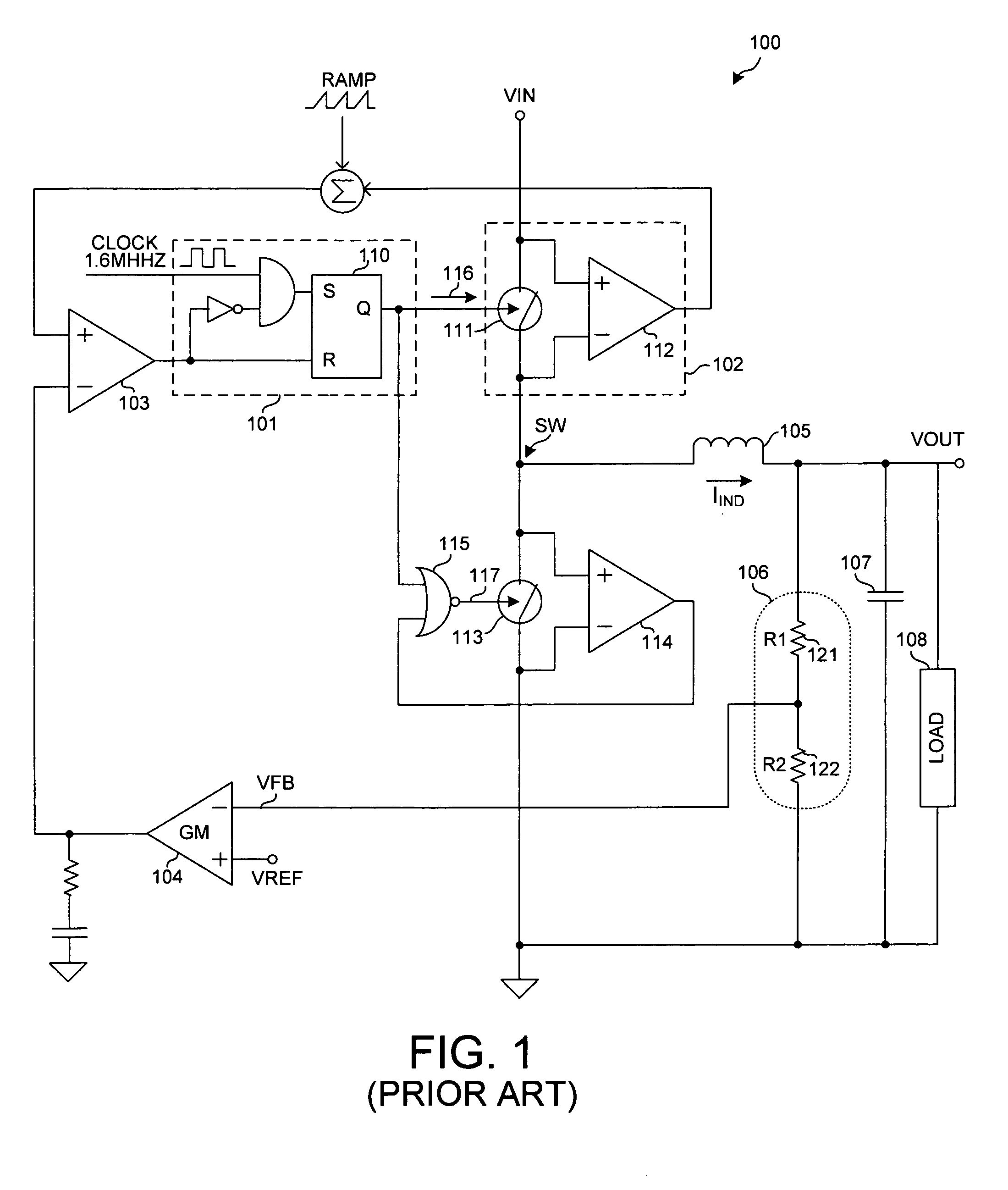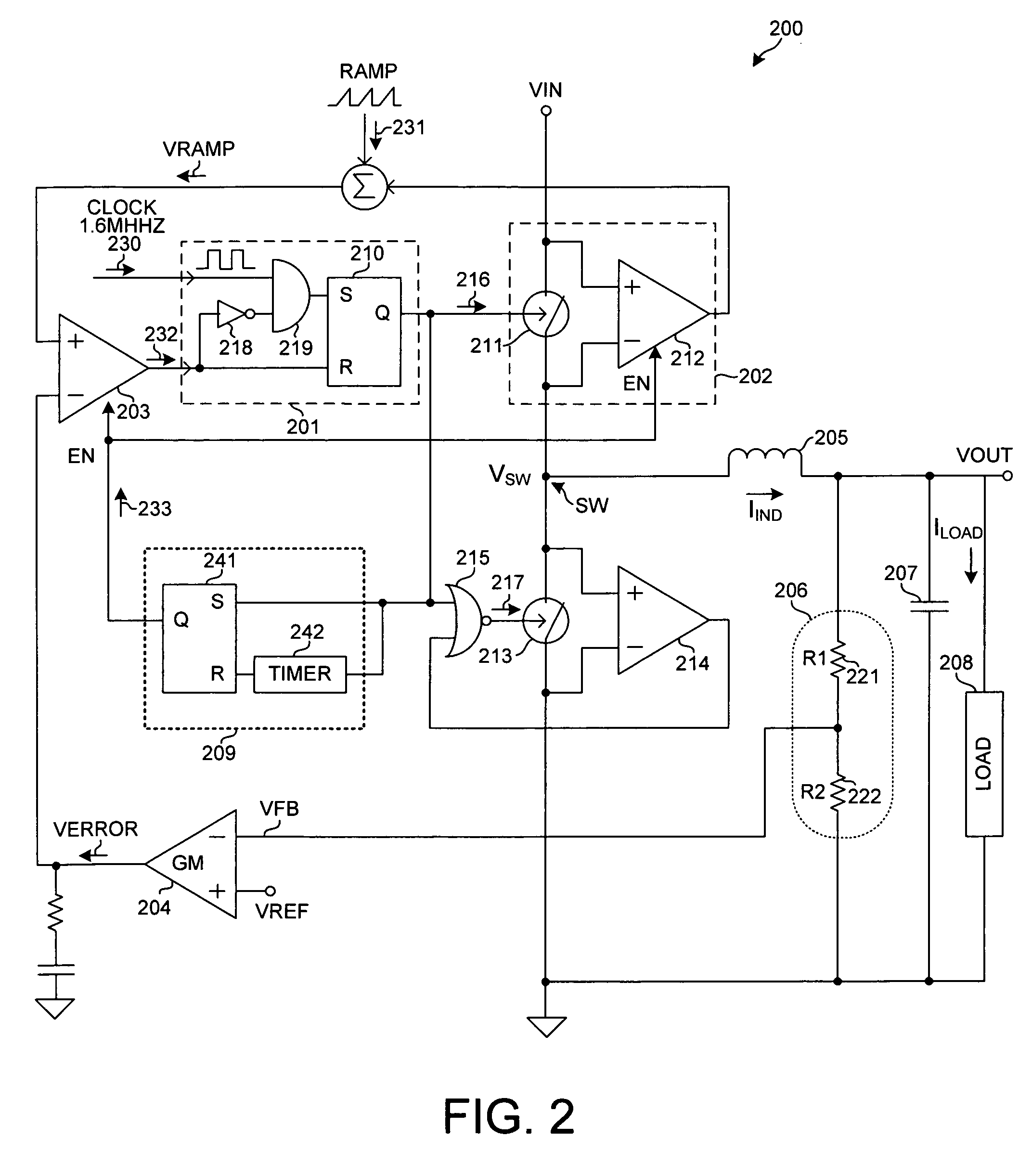High efficiency voltage regulator with auto power-save mode
- Summary
- Abstract
- Description
- Claims
- Application Information
AI Technical Summary
Benefits of technology
Problems solved by technology
Method used
Image
Examples
Embodiment Construction
[0013]Reference will now be made in detail to some embodiments of the invention, examples of which are illustrated in the accompanying drawings.
[0014]FIG. 2 is a block diagram of a DC-to-DC converter 200 in accordance with one novel aspect. DC-to-DC converter 200 includes a Pulse-Width Modulation (PWM) controller 201, a power switch unit 202, a PWM comparator 203, an error amplifier 204, an inductor 205, a voltage divider network 206 formed by resistors 221 and 222, an output capacitor 207, a load 208, and a control signal monitoring circuit 209. PWM controller 201 includes a sequential logic element (for instance, an SR latch circuit) 210, an inverter 218, and an AND gate 219. Power switch unit 202 includes a switch device 211 and a current sense amplifier 212. Control signal monitoring circuit 209 includes a sequential logic element (for instance, an SR latch circuit) 241 and a timer 242. DC-to-DC converter 200 further includes a synchronous rectifier 213, a comparator 214, and a ...
PUM
 Login to View More
Login to View More Abstract
Description
Claims
Application Information
 Login to View More
Login to View More - R&D
- Intellectual Property
- Life Sciences
- Materials
- Tech Scout
- Unparalleled Data Quality
- Higher Quality Content
- 60% Fewer Hallucinations
Browse by: Latest US Patents, China's latest patents, Technical Efficacy Thesaurus, Application Domain, Technology Topic, Popular Technical Reports.
© 2025 PatSnap. All rights reserved.Legal|Privacy policy|Modern Slavery Act Transparency Statement|Sitemap|About US| Contact US: help@patsnap.com



